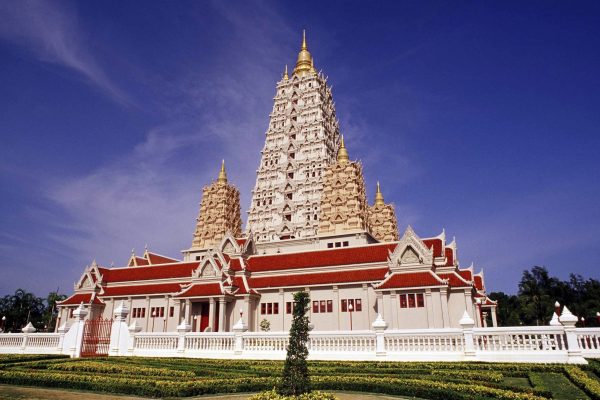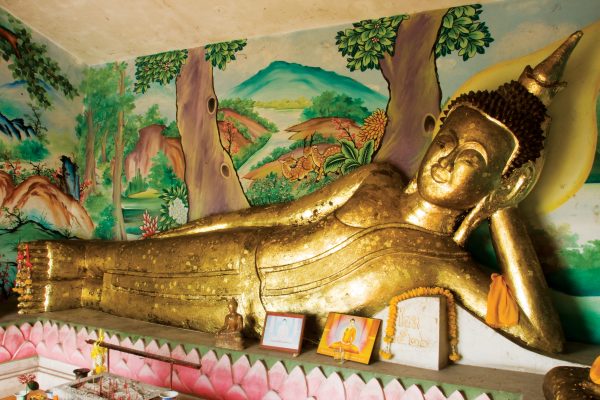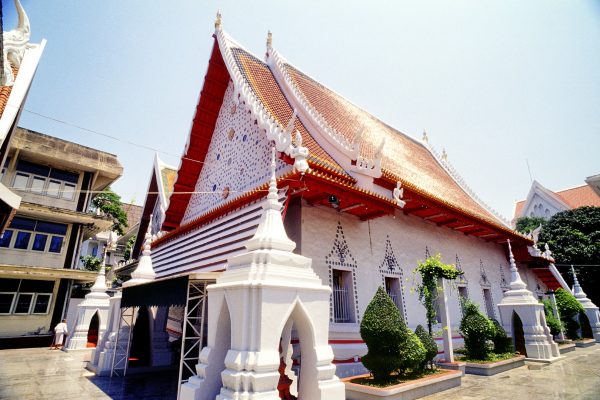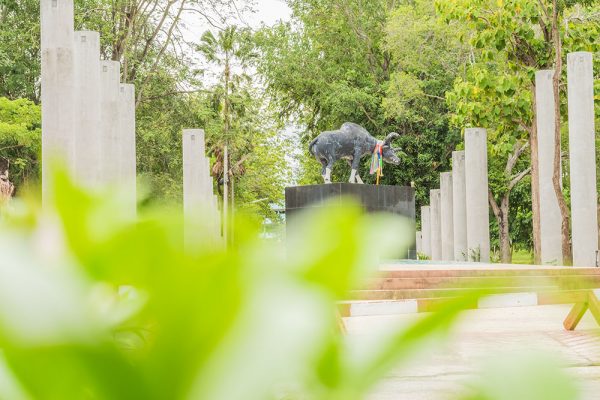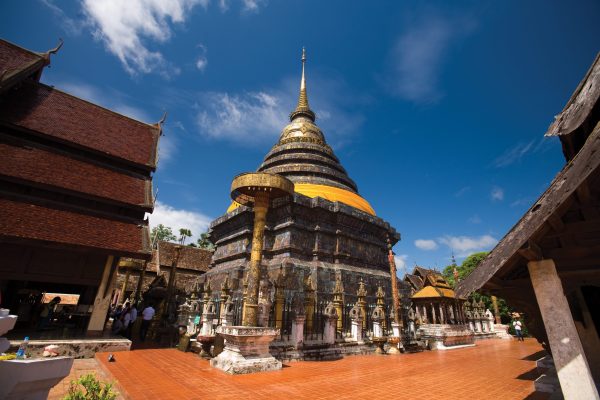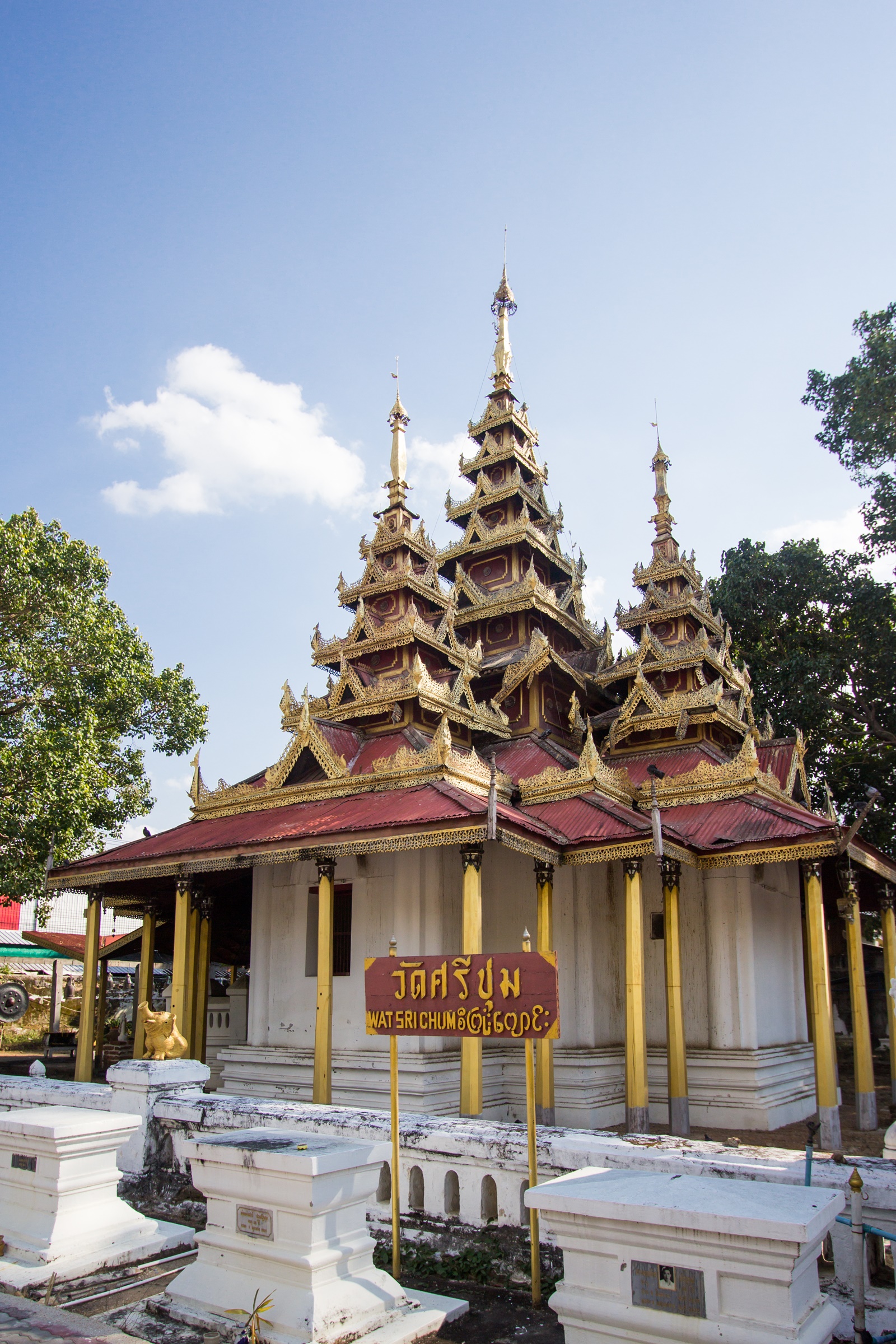
Wat Si Chum
Wat Si Chum was built in 1890 during the reign of King Rama V by wealthy Burmese people, Jong Taka U Yo, his son in law, U Mong Yee, and the stepmother, Pom Boriboon. The temple is located on Thipwan Road, Tambon Suan Dok, Mueang District, Lampang. It is a temple with beautiful Burmese art inside including a gold pagoda of Mon-Burmese art. The Buddha’s relics which were brought from Myanmar in 1906 are inside. Wat Si Chum was announced as a historic site by the Fine Art Department in 1981. In 1992, the old Vihara was unfortunately on fire which caused the temple to be severely damaged. Only the beauty of carvings which is the handrails delicately carved as if curtains is hanging down to the staircase with a roof covering the stairs remained. This vihara, therefore, was rebuilt under the same architectural style.The temple, as mentioned earlier, was built by wealthy Burmese loggers who came to live in Lampang. According to Wat Si Chum’s history, before the wealthy Burmese built this temple, the area had been occupied by a small temple with only a pavilion and a Bodhi tree. Later in 1892, the Burmese asked the governor of Lampang for permission to build Wat Si Chum and named it in Burmese as “Yong Wai Jong”.The temple is complete with a vihara, an ubosot, a pagoda, monk’s houses and an arched gate, all in Burmese art.The vihara, which is located in the middle, is a half-wood, half-concrete building in Burmese style. The roofs are piled up, 7 layers to the top. The roof top is decorated with golden a many-tiered umbrella. Both sides of the staircase is delicately carved, gilded and lacquered in the shape of Burmese dolls on the design of intertwined sprays. The tympanum is flower-patterned and decorated with mosaic.The ceilings are decorated with carved dolls in many different shapes such as lion, fish, cow, monkey, bird, elephant, horse, child, and angel.Apart from the construction, wood engraving and mosaic indicating the Burmese style, and the principle Buddha image, situated in the middle where 7 layers of the roof meet, there is also a Burmese image in the attitude of subduing Mara with a low forehead, a flat face, arched eyebrows, a prominent nose, a smiling mouth, long ears to the shoulders, delicate hair, wide knots on the image’s head, and covered in a monk’s robe.The principle images of Burmese temples in Lampang are mostly carved from a teak and later gilded but not all Burmese Buddha image are carved from wood. Some are made of marble and some big ones are made of bricks and layered with cement like Thai Buddha images. Even though the temple could not be renovated to be as beautiful as it was before the fire accident, it exactly copied from the old one. The ubosot on the southeast has a low wall surrounding. The entrance to the ubosot was made of bricks and cement with a 3-layered roof, each decorated with perforated metal patterns. It is a square building with four gable ends. The top is decorated with a many-tiered umbrella. Inside, a Burmese Buddha image is located facing the east. The pagoda is round and made of bricks and cement in Burmese style. The neck of the pagoda has stucco decoration. The Buddha’s relics from Myanmar were placed inside. To get to Wat Pratu Pong by car, from the centre of Lampang, cross Ratsada Phisek Bridge. Turn right at the junction near Ratchada Phisek Market. Drive straight for a short while. The temple is on the left.

